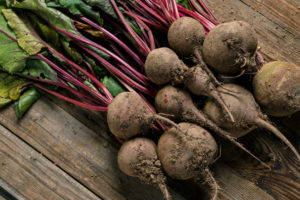Twofer Vegetables – Great Food Bargain
I had a busy weekend. It was time to pick some vegetables - the beets - in my garden to pickle and can before beet thieves got them. The small slimy ones (thanks to our abundance of rain this fall), the tree-dwelling ones with bushy tails, and the tall ones with opposable thumbs. “What?!” some of you might say, “What human would steal beets?!” You’d be surprised at our numbers. In fact, I had a human beet thief for several years in the past. They always came under the cover of darkness, never took all the beets, and left the greens in a neat pile. So I started to plant more for us. I was happy to have a kindred spirit enjoying the beets. One year they just stopped coming. I never knew who they were or what happened to them, but I mourned their disappearance.

My other major chore for the weekend was making a big pot of minestrone soup with the last of the garden eggplant, zucchini, peppers, carrots, and tomatoes. As I was removing the greens from the beets, I thought I’d just throw them in the soup, too, even if the recipe didn’t call for greens. There’s no law against it, after all. But, maybe there should be a law that requires leafy greens in all our soups. See my blog from the beginning of the growing season about eating your leafy greens. Beet stems are also edible and nutritious, so I chopped them up to add to the soup, too. I started to think about all the unused vegetable parts that are simply discarded—the wasted twofer vegetables. Beets became a threefer vegetable: the beetroot itself, the greens, and the stems, but wait...I wasn’t done with the beet! I freeze my beet water for cooking lentils. It’s my secret ingredient—adding a wonderful depth of color and flavor to my lentil soup. My much loved beet is a fourfer vegetable!
What other twofer vegetable parts are being tossed?
- I recently tried a carrot top soup sample at my local co-op food store. I had never had carrot tops, never even considered eating them so I just threw them in the compost pile. The soup was quite tasty. I looked up the nutritional value of carrot tops: magnesium, potassium, vitamin K for starters. (Carrot tops from my garden went into my minestrone soup, too!)
- Turnips are another twofer I enjoy— raw, roasted, mashed… And I love the greens. They cook quickly for a fast side dish, or the fresh leaves are great on a fried egg sandwich.
- Add radish greens to salads, sauté in butter or throw in soups. Radishes can even be a threefer vegetable if you let some go to seed to sprout. The sprouts are a spicy addition to salads or for garnishing soups.
- Who doesn’t love ants-on-a-log, fresh celery with peanut butter and raisins? Chopped celery is on the ingredient list for just about every soup or stew. But how many of us discard the celery leaves? Instead, use them like parsley for garnishing, adding to salads and soups. Easy to freeze for later use, too.
- Squash seeds are delicious and super nutritious. I reserve my squash seeds and roast for the cook’s special treat. (If I’m feeling generous, I’ll share with my loved ones.) I haven’t tried roasted watermelon seeds, but have heard they, too, make a great snack.
The next time you are about to toss the greens, stems, or seeds from a vegetable, think twice. Not sure if it’s edible? With information at our fingertips through the World Wide Web, you are just a few key strokes away from knowing. No reason to waste your hard-earned money and valuable nutrients by tossing out perfectly edible vegetable parts!
Author Mary Ellen Kaluza is a Certified Financial Counselor with and she is our resident green thumb and frugality expert.
